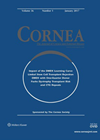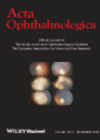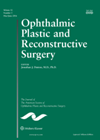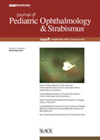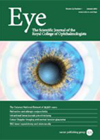
Journal Reviews archive for February 2017
Systemic fungal infections and corneal transplants
This prospective study looked at corneal donors with positive medical history of systemic fungal infection (oral thrush or respiratory, urine, wound, sputum, bronchial, tracheal, or throat culture positive for fungus), to establish if the risk of post-keratoplasty fungal eye infections...
OCT in peripheral corneal thinning
This small retrospective study used high resolution optical coherence tomography (OCT) Heidelberg Spectralis to identify features which could determine the underlying aetiology of peripheral corneal thinning. Ten patients were included; five with diagnoses of degenerative peripheral thinning; Terrien’s marginal degeneration...
Quarter DMEK
This case report describes a novel technique where one quarter of Descemet’s membrane (DM) was transplanted during a quarter-descemet membrane endothelial keratoplasty (DMEK) procedure. DMEK graft was prepared from a 58-year-old corneo-scleral donor after one week in culture. Peripheral DM...
Does cornea cross-linkage reduce the rate of corneal transplants in keratoconus?
Cornea cross-linking (CXL) is a relatively new treatment in the management of keratoconus, which may help prevent the need for corneal transplant. This paper investigates if the introduction of corneal cross-linkage has reduced the number of corneal transplants performed annually...
Spontaneous resolution of inferior oblique over action
The purpose of this study was to evaluate the course of over-elevation in adduction in patients who had surgery for esotropia. Following a chart review, 28 patients met the inclusion criteria with a mean age of 53.5±53.7 months (12-252 months)....
Postoperative diplopia test with BT for inferior oblique overaction
The authors evaluate a novel assessment of botulinum toxin (BT) injection into the inferior oblique (IO) as a postoperative test in those with secondary IO overaction. This was a retrospective review of 23 injections for 18 patients using 1.25U of...
Single muscle surgery for hypertropia
The authors undertook partial tenotomies combined with graded marginal recession of single vertical rectus muscles to treat small angle hypertropia in four adults with fusion potential. They report dose response, surgical technique and outcomes. Dose response closely matched the theoretical...
Prediction of recurrence in exotropia
This study compares the long-term motor and sensory outcomes between constant and intermittent exotropia in infancy and investigated whether constancy can be used as a reliable factor for predicting surgical outcomes. Sixty-seven patients were reviewed – 37 constant and 30...
RCT of operative routes for congenital cataract surgery
The authors evaluated the performance of 25G vitrectomy systems in the management of congenital cataract in infants through two routes – anterior (transcorneal) and posterior (pars plana). This was a prospective randomised trial (RCT) of 24 eyes of 12 patients...
Orbital rhabdomyosarcoma treatment characteristics
The aim of this study was to review the clinical presentation, management, local and systemic outcomes of 14 orbital rhabdomyosarcoma (OR) cases with the focus on the role of surgery as treatment. The mean age at presentation was eight years...
An alternative to povidone-iodine for intravitreal injections?
While povidone-iodine (5% aqueous) preparations have historically been considered the most effective antimicrobial prophylaxis for ophthalmic procedures and have been adopted as routine for intravitreal injections, post-procedure pain is a commonly recognized adverse event of IVI and has typically been...
Licence to save: a UK survey of anti-VEGF use for the eye
This comment article highlights the controversy that exists in the choice for anti-VEGF drugs used for treatment of macular oedema and wet age-related macular degeneration (AMD). Two existing licensed drugs for macular oedema are ranibizumab (Lucentis) and aflibercept (Eylea). A...

